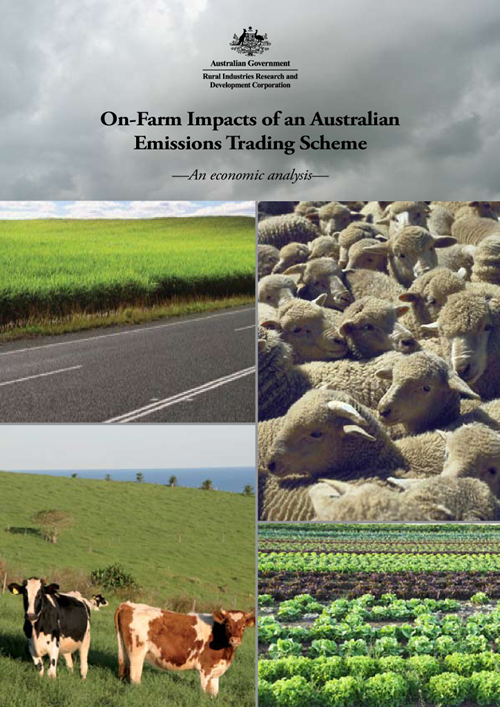The Australian Government is planning a carbon pollution reduction scheme (CPRS) to achieve its long term target of a 60 per cent reduction in greenhouse gas emissions by 2050 from the volume produced in 2000. While agriculture will not be included in the scheme before 2015, (with a decision to be made in 2013), the government considers its ultimate inclusion in the scheme to be desirable.
The Rural Industries Research and Development Corporation (RIRDC) is interested in understanding the impacts of the CPRS on the industry and farmers so that it can contribute to the development of the CPRS policy on behalf of government and industry stakeholders. This report examines the potential impacts of a CPRS from various aspects.
Agriculture will be affected by the CPRS both directly and indirectly. Emissions costs in the form of abatement and/or to purchase permits will potentially account for a significant share of production costs for livestock sectors, and it is difficult for Australian farmers to pass the costs to their customers because most of their products are exported. Even if agriculture is not included in a CPRS, it will still be impacted by higher input prices and lower demand.
This report provides detailed information on the impacts of a CPRS at the farm level. While embedding its analysis in an economywide perspective, this report provides detailed impact estimates for each agricultural sector and each type of farm. It will be a useful basis for those contemplating investment or formulating policy and will help to inform RIRDC as it plans its research and development priorities into the future.
The primary audience of the report is industry leaders. It could be distributed to a wider audience, including politicians, policy makers, industry experts, farmers and the research community. It will contribute to the debate of greenhouse policies by providing more insights into the likely economic and financial impacts on agriculture.





